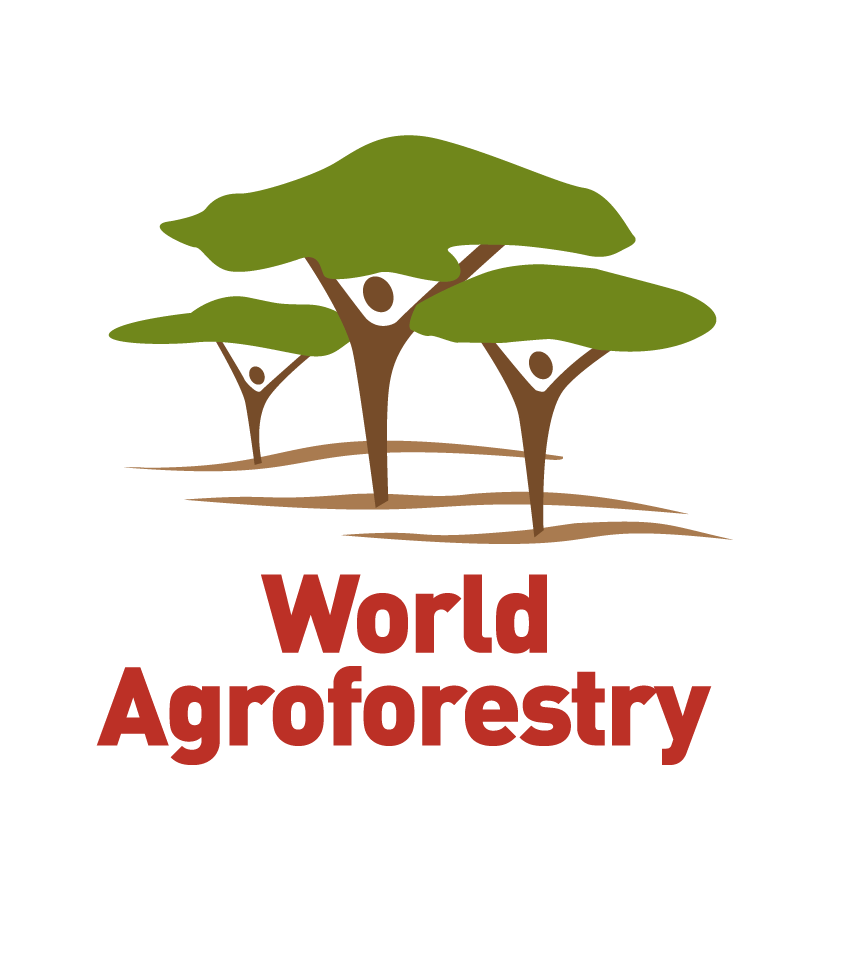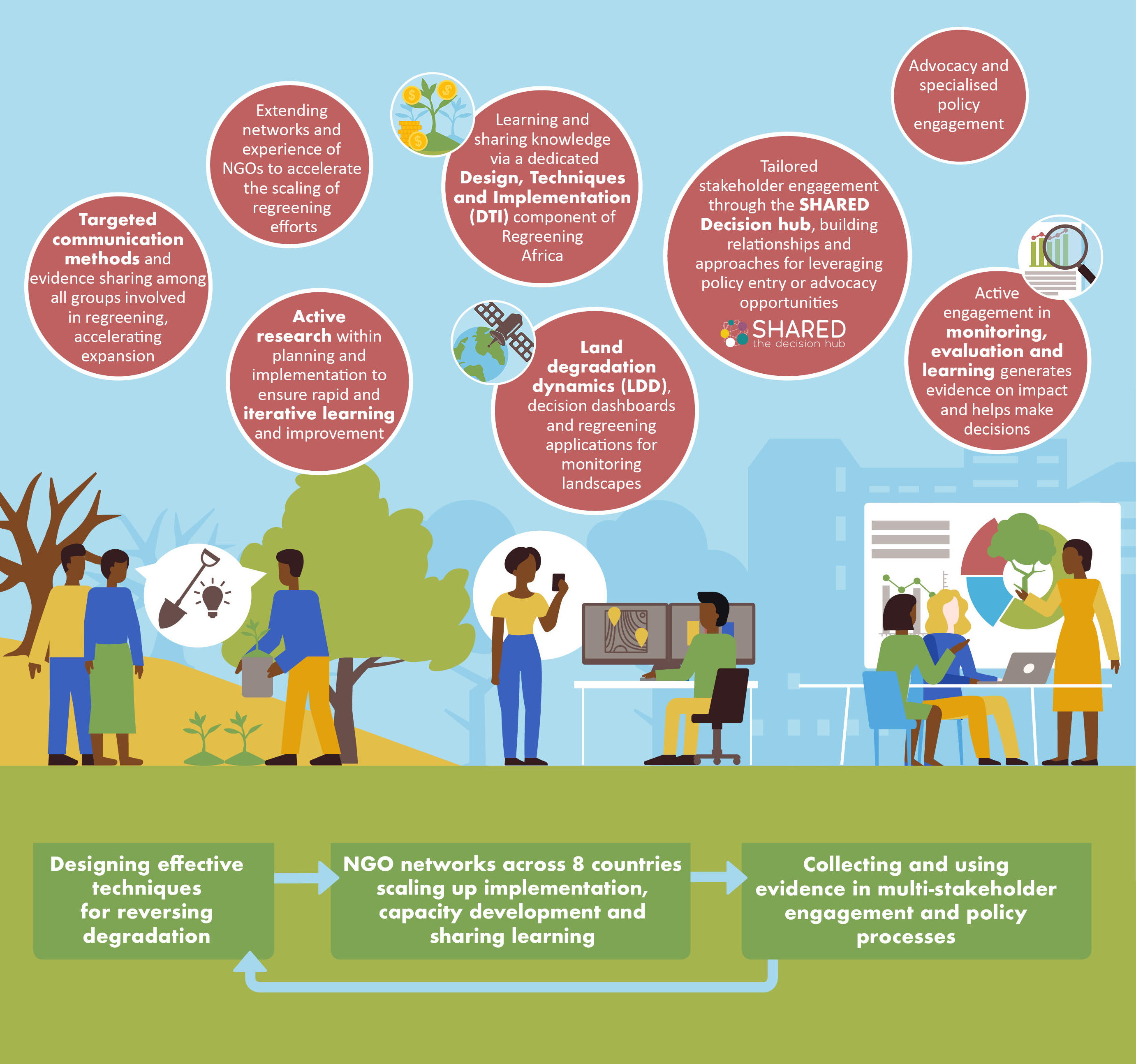Approach and objectives
By 2022, Regreening Africa aims to improve livelihoods, food security, and resilience to climate change of smallholder farmers by restoring ecosystem services, particularly through agroforestry.
OBJECTIVE 1
The economics of Sustainable Land Management
Enhance the national ability of each country to asses the economic cost of land degredation and increasethe awareness of the economic benefits of investment in Sustainable Land Management.
OBJECTIVE 2
Strategic decision-making for scaling
Collecting and using evidence in multi-stakeholder engagement and policy processes.
Equip target countries with surveillance and analytical tools for land degradation, that support strategic decision-making and monitoring.
OBJECTIVE 3
Scaling-up evergreening agriculture
Accelerate scaling-up of evergreen agriculture using locally appropriate techniques including Farmer-Managed Natural Regeneration, tree planting and other forms of agroforestry.
IMPACT
Reverse land degradation among 500,000 households and across one million hectares in eight countries in sub-Saharan Africa.

Funded by the European Union










Cross-cutting issues

Gender
Women comprise, on average, 43% of farm labour in developing countries. Despite being key players in both agricultural and pastoral production processes, female farmers face significant barriers to realizing the benefits of their labour.
Regreening Africa supports gender-equitable policies and practices to empower women and girls by promoting economic and social rights and strengthening their voice and participation.

Youth
Underemployment and limited livelihood options for youth are prime drivers of instability, insecurity and migration.
Regreening Africa expressly focuses on increasing youth engagement in agroforestry through training, capacity development and support of key commodities.

Food and nutritional security
The mismanagement of land, resulting in degradation, has exacerbated food insecurity.
Regreening Africa will improve soil quality, leading to increased food production which will in turn result in improved food security.

Our approach to scale-up regreening
Options: compile set of suitable tree species, management processes, value chains and policy interventions for the target area.
Involve local actors in defining their preferences amongst options and needs to locally adapt them.
Promote options and gather feedback from stakeholders on their performance.
Reflect on successes and failures and the reasons for them.
Leverage: communicate successes and co-ordinate with other initiatives to spread regreening widely.
Evaluate impact: measure the extent regreening has changed lives and landscapes.
Expected results by 2022
500,000
households sustainably manage 1 million hectares
5%
decrease in soil erosion
10%
increase in tree cover
A significant return on investment from restoration through improvement of livelihoods:
10%
average increase in household income
Agroforestry value chains creating
more wealth
Improved income
opportunities for women and youth
5 out of 8 countries
monitoring at least 50% of their land area
Five out of 8 countries
independently use new tools and approaches
